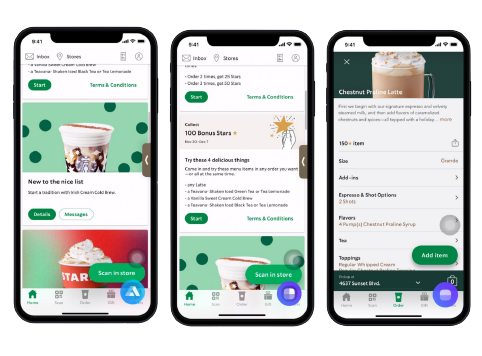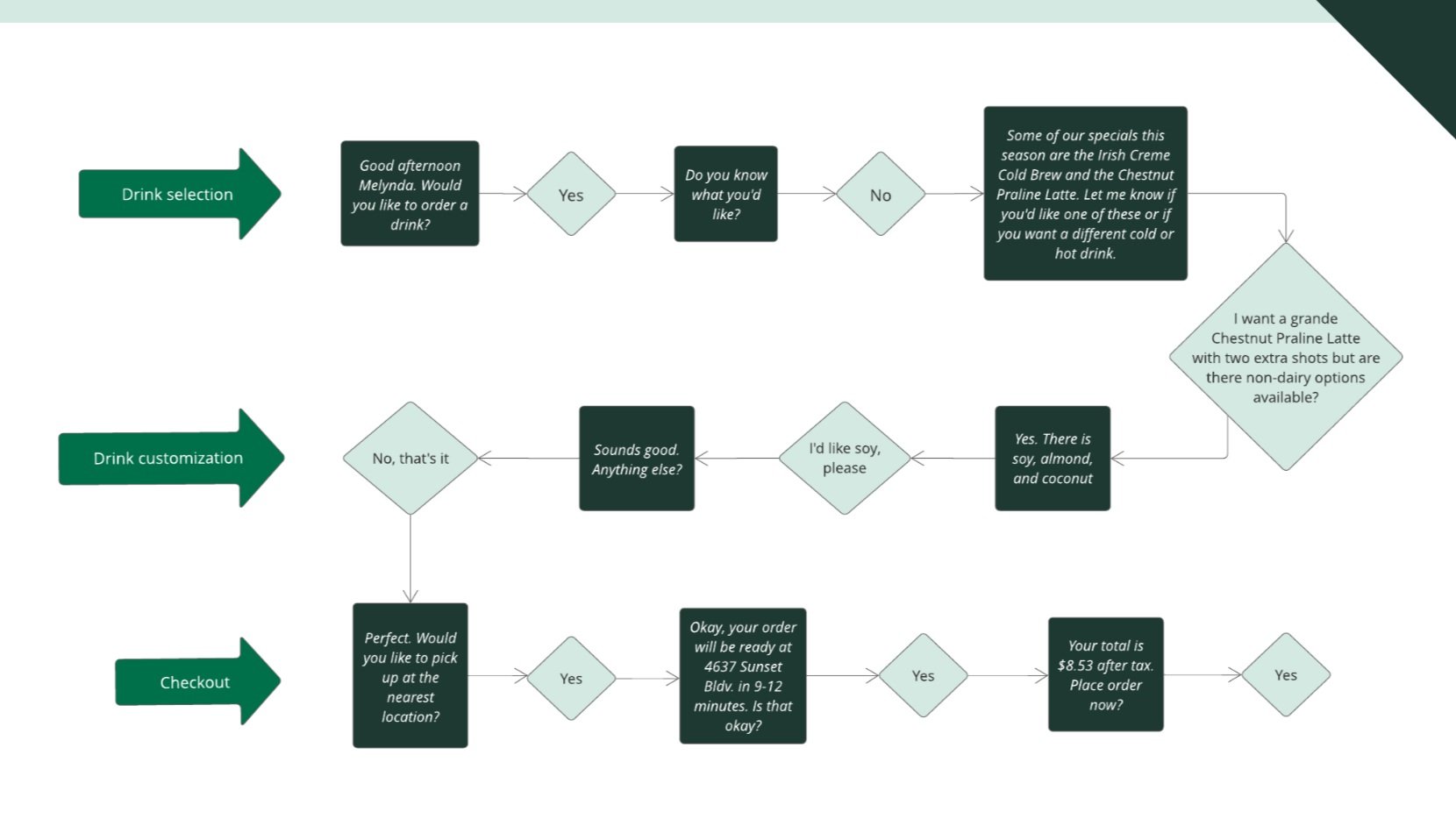
Alan AI & Starbucks
Alan AI hosted a design challenge in December 2020. The challenge’s prompt is to integrate voice recognition in an existing app.
My team created a voice interface for the Starbucks mobile app where users can place an order completely hands-free. Our submission won second place!
In this challenge, I worked on concept design and scripted our prototype’s dialogue.
Project duration: 1 month, submitted December 2020
Team: Michele Chao, Melynda Phung

Target Audience
Voice integration in the Starbucks app will allow users with limited physical abilities and drivers to order a drink with only their voice. This may bridge those with peripheral neuropathy to possibilities beyond touch. Other users that may benefit from this are Starbucks members who drive.
Process
We wanted our conversation to reflect the steps a user would take as though they were ordering through the app. One of the first things a user sees upon opening the app is seasonal specials.


The Starbucks app’s home screen presents holiday drinks (left).
After the AI prompts a few holiday drink suggestions, our user answers back requesting not just a drink but a customization to their drink - an extra 2 espresso shots. In the same response, our user asks the AI about available dairy substitutes. The AI presents options and our user selects one.
The item screen reflects all the customizations the user selected (right). Once the user is satisfied with their drink, the AI confirms the location and total and places the order.

Flow chart of our scripting for the conversation between AI and user
Outcomes
Constraints
The AI button overlay (found in the lower right) takes longer to begin registering the user’s response than what was animated, which was the overlay button turning from a cerulean to purple. This meant that the response rate in a normal, human conversation is quicker than the AI would start listening.
Another cosmetic fault was the quality of the video recording dropping as the voice AI is integrated. The editing tool didn’t have a save feature, which I learned the hard way.
Despite these constraints, we were ultimately successful in addressing the problem statement in response to our audience’s needs.
Successes
Besides winning second place, I succeeded in learning about what applied UX looks like in the realm of mobility disabilities. This was one of my first ventures into accessibility work and the opportunity really presents potential for design to expand into more everyday experiences.